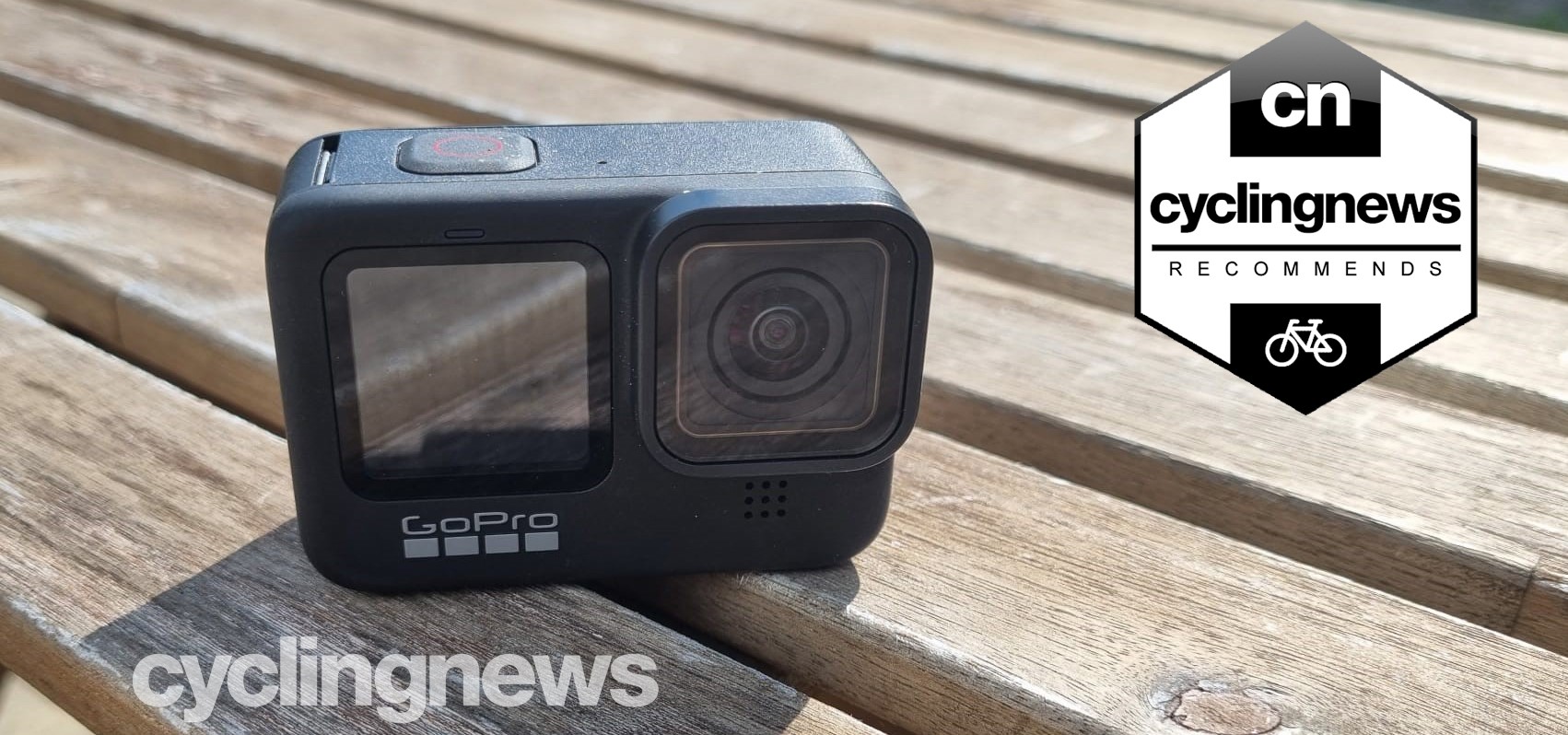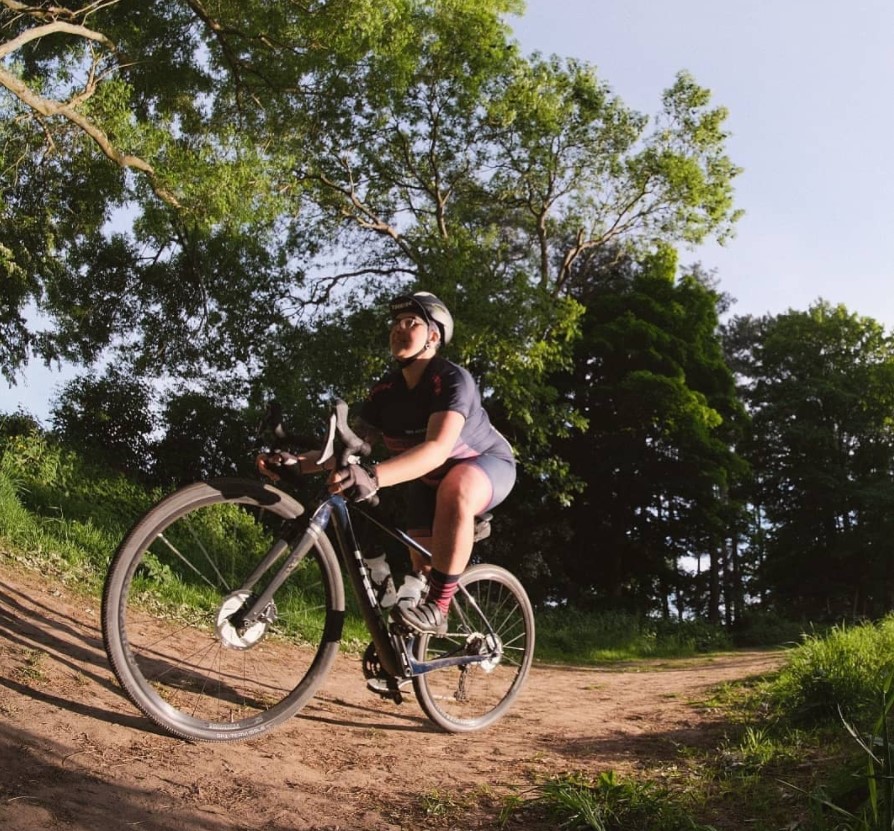Cyclingnews Verdict
Powerful, feature-packed and comes with incredible image stabilisation, but unless you’re a cycling vlogger or filmmaker, it’s probably a bit overkill
Pros
- +
Image stabilisation is incredible
- +
Inbuilt mounting points
- +
5K video quality (if your phone or computer supports it)
- +
GoPro Mods extend function to enhance video capabilities
- +
Front display great for vlogging
- +
Very easy to record on the go
- +
Includes a time lapse mode and photo mode with 20mp quality
- +
Decent battery life: up to 3 hours at 1080p
- +
Huge amount of mounting options and accessories available
Cons
- -
Its bulk could impact performance on race day, especially if you're trying to make aero gains
- -
There's a bit of a delay to start recording, which could result in missing something important
- -
Requires a subscription to export files quickly and easily
- -
Connectivity is a bit erratic
- -
You need decent processing power to edit high-resolution clips
- -
Incompatible with older batteries
You can trust Cyclingnews
Released around a year ago, the Hero 9 Black is GoPro’s current flagship model of action camera, boasting its most up-to-date technology and premium features.
There are many reasons why a cyclist might choose to mount a camera like this to their bike, whether it’s wanting to capture their adventures to share with loved ones when they get home, record their urban commutes as a precaution, or document their race day performance for later dissection. Or, as this latest model will attest to, there’s a new breed of cyclist emerging, at whom this product is likely targeted, and that is the cycling vlogger and filmmaker. More on this shortly.
Whatever the reason, there’s a healthy market out there for the best action cameras for cycling. With so much competition, what is it that makes GoPro’s Hero 9 stand out against the rest? Just how powerful is this palm-sized machine, and is it worth the hefty price tag?
We've spent a few months testing it out in varying conditions to see how well it performs, and gauge whether or not it’s worth the investment. Read on to find out what we think.
Design and aesthetics
Compared to its predecessor, the GoPro Hero 9 Black is quite bulky. Measuring at 71mm x 55mm x 34mm, it’s visibly larger than the Hero 8, though it’s no surprise, given the improved performance features and increased battery life; all that power has to go somewhere.
However, this marks the first hurdle for anyone looking to record their races and not wanting to lose precious time or energy to this endeavour. If you measure the width of your stem and head tube, you’re most likely going to find it’s narrower than 71mm, which means even without access to a wind tunnel, it’s fair to say that the GoPro is going to cause some drag. The same goes for its weight: at 160g, it’s 34g heavier than the Hero 8, and that’s a fair amount of heft to add to your cockpit.
The unit itself has a sleek and minimalist design. Everything is tucked away neatly, from the sliding door that reveals the battery, mini-SD slot and USB-C port, to the ‘folding fingers’ at the bottom. These form the standard GoPro mounting system, and neatly fold away when not in use.
The entirety of the back is taken up by a touchscreen that measures 2.27in and provides a very clear view of what’s being captured through the lens. Meanwhile up front is a square-shaped second screen, measuring 1.4in, the key purpose for which is clearly vlogging, or simply being able to turn the camera upon yourself and easily frame the shot.
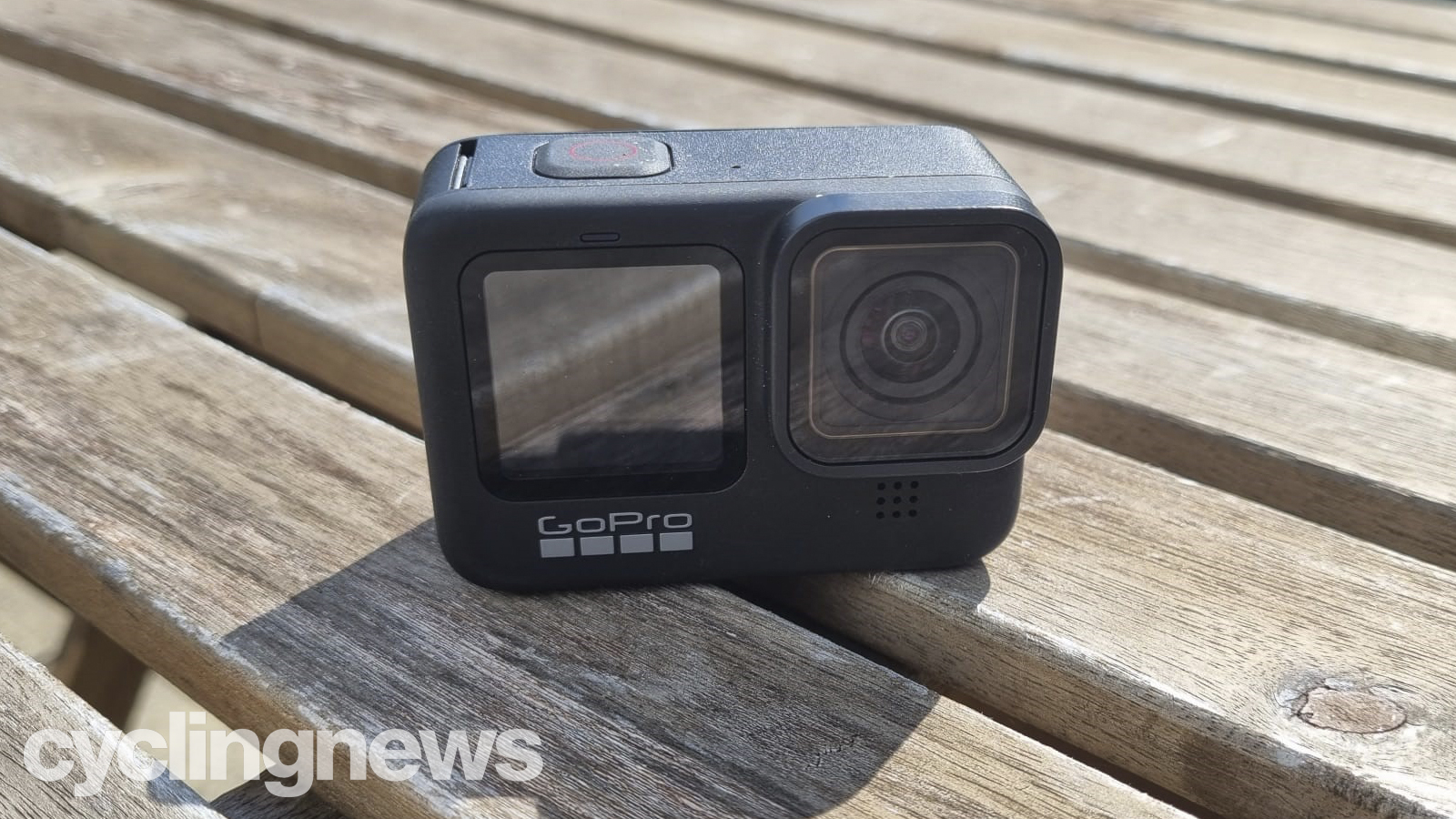
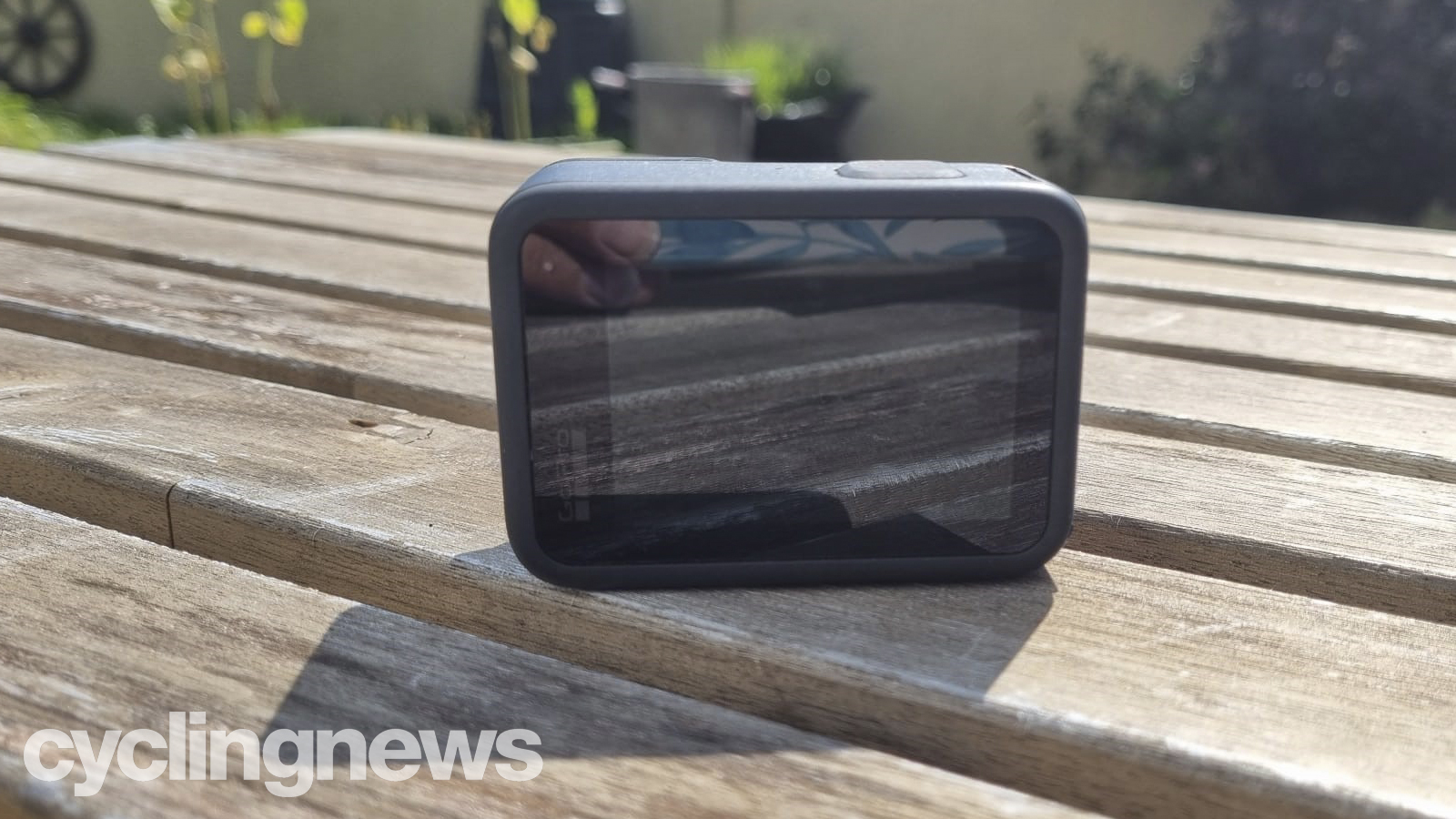
Next to the front screen you’ll find the lens, also square-shaped, which protrudes from the unit and is actually removable if you twist it anti-clockwise. This enables you to install lens filters should you wish; this isn’t something we did for the review.
In terms of what’s visible to you, the front screen offers up information about the Hero 9’s current battery and memory status, as well as the mode it’s currently filming in (more on this later). You also get a small red light to let you know when it’s recording, and a timer appears in the top-centre of the screen. In the bottom left there’s a camera logo that reminds you which mode you’re currently using.
If you’re unlikely to be using the front screen very often, you can actually switch it off in order to save on battery life.
Speaking of which, inside you’ll find a 1,720mAh Li-ion battery that’s sizable in comparison to previous models. While this is the source of the Hero 9’s improved battery life over its predecessor, it also means there’s no cross-compatibility with older spares, so you might need to invest again if you’re upgrading from the Hero 8.
Settings and navigation
Navigation
The Hero 9 has two buttons: one on the top for recording, and one on the side for switching on and off. The latter also doubles as a quick way to toggle between the camera’s three main modes: time-lapse, video and photo.
When you turn the camera on it’s ready to record, and both screens display the view through the lens. Touchscreen capabilities at the back allow you to navigate across varying settings. Swiping upwards allows you to view stored footage, swiping left and right toggles between the three modes, and swiping downward reveals two panels of settings. This is where you can also connect to WiFi and set preferences like display and voice control.
Video
While in video mode, you can switch between shooting modes (more on these below) by tapping on the currently selected mode in the bottom-centre. Tapping the bottom left offers a choice between Wide (16-34mm) and SuperView (16mm) lenses, the bottom right offers manual zooming, while the centre-right enables you to switch Boost on and off for maximum image smoothing.
The camera comes complete with four preset shooting modes — Standard, Activity, Cinematic and Slo-Mo — all of which vary in terms of the resolution, the number of frames per second (fps) and lens (narrow, linear, wide and horizon-leveling). You can fine-tune these as much as needed, toggling between functions such as HyperSmooth (image stabilisation), HindSight (captures up to 30 seconds prior to pressing record) and Scheduled Capture, as well as setting a duration limit. On top of this, there are up to 16 name presets for custom modes available, including ‘bike’, ‘looping’, ‘trail’, ‘POV’, ‘selfie’, ‘mounted’, ‘outdoor’, and ‘epic’.

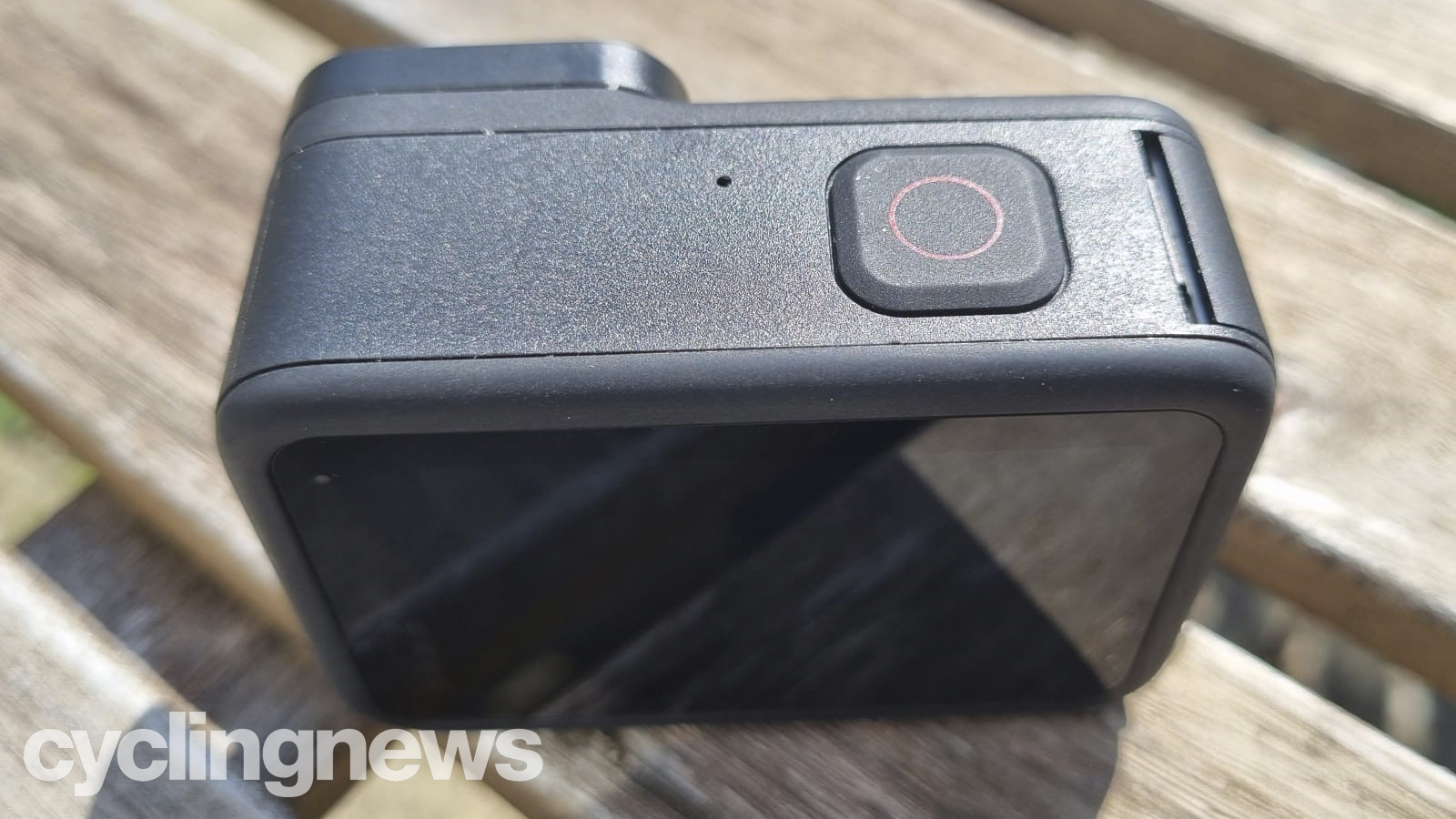
Photo
With photo mode, the GoPro Hero 9 can take 20 megapixel photos, and with the mode selected, there are some extra options available on screen. Centre-left allows you to set a timer, while centre-right allows you to choose between four output modes: RAW, Standard, HDR and SuperPhoto. Tapping the bottom centre will take you to your different photo modes, which include LiveBurst and Night Photo, as well as the option to add your own custom presets.
Time-lapse
The time-lapse mode allows you to record a sped-up version of something, whether it’s capturing a single lap from a race, or filming yourself building a bike. Each to their own.
On the main screen, you can select from preset custom modes for standard time lapses or for shooting at night, and choose various settings, like the resolution, duration limit, and interval length.
Performance
Once you’re set up and ready to go, recording is very easy. Pressing the record button once, even when switched off, prompts the Hero 9 to start recording footage. Without HindSight switched on, there’s a delay of around four seconds between pushing the button and the start of your video. This could be a real problem for anyone trying to capture road incidents like a close pass, and this is where HindSight comes in.
It’s a very clever feature that allows the Hero 9 to capture up to 30 seconds of footage prior to pressing record. This only works if the camera is already powered on (or in sleep mode), so bear that in mind if you’re using it to defend yourself on the roads.
I’ve tested the Hero 9 out on all manner of rides, from rainy and windy road rides in the Peak District, to sunny and muddy trail rides in the Forest of Dean, as well as some amateur attempts at interviewing a friend while cycling together, and I can attest to the fact that the quality of its videos is superb, having experimented with recording in 1080p, 2.7K, 4K and 5K, and with varying frame rates.
The battery life is actually really impressive. It shouldn’t come as a surprise really, seeing as the bulk of the Hero 9 compared to the earlier models is for the most part down to the sizable battery nestled within. When shooting at 1080p and 30fps, I was able to eke almost three hours out of it, while filming in its ‘cinematic’ mode at 4K and 30fps had it lasting just over two hours.
The HyperSmooth 3.0 image stabilisation is simply outstanding, especially combined with the Boost mode to combat really rough surfaces. The Hero 9 features built-in horizon-levelling as an option, which does exactly what the name suggests. Taking the ride off smooth tarmac and onto rough mountain bike trails didn’t seem to phase the Hero 9, and with HyperSmooth switched on the footage is fluid and easy on the eyes.
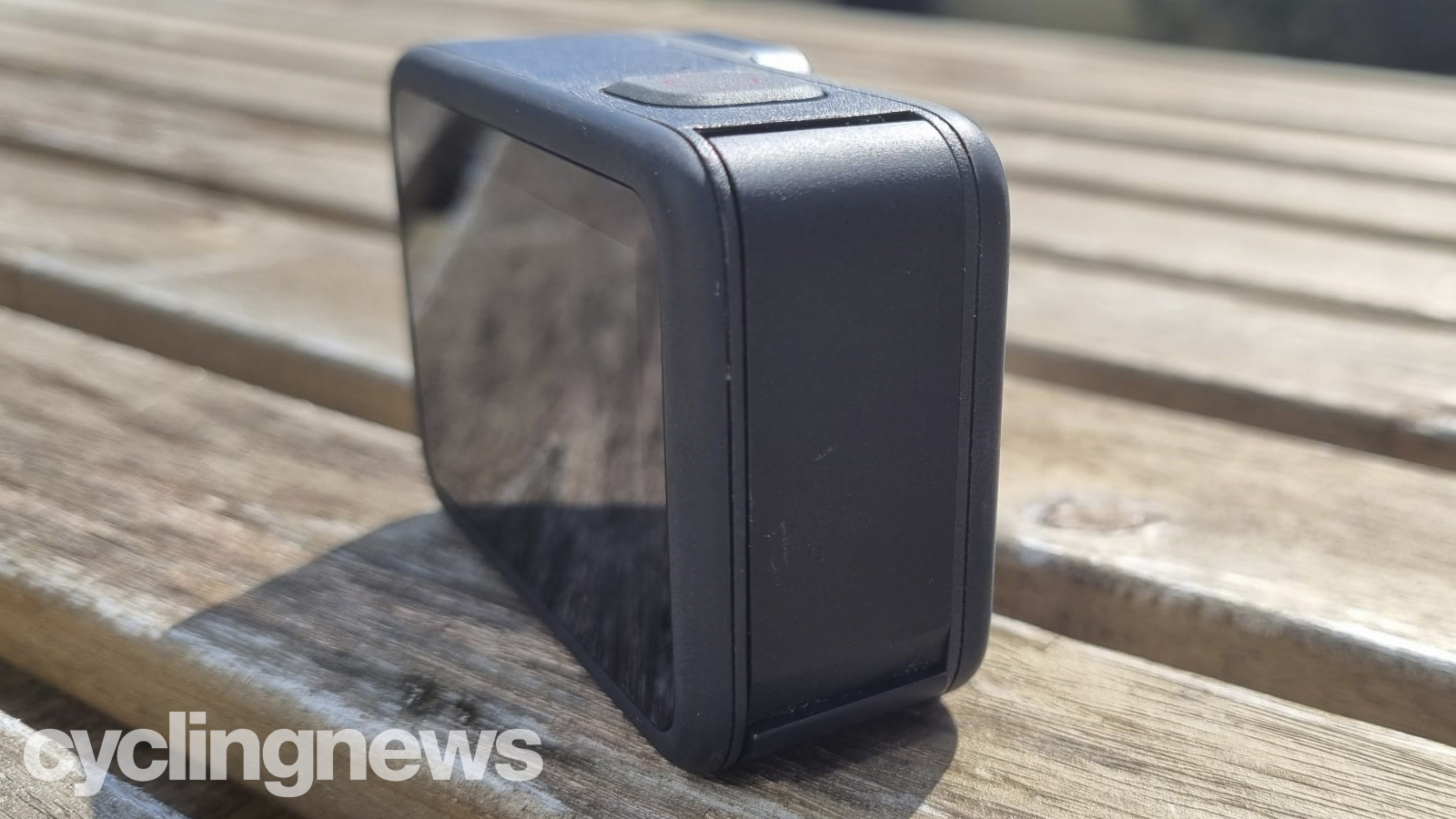
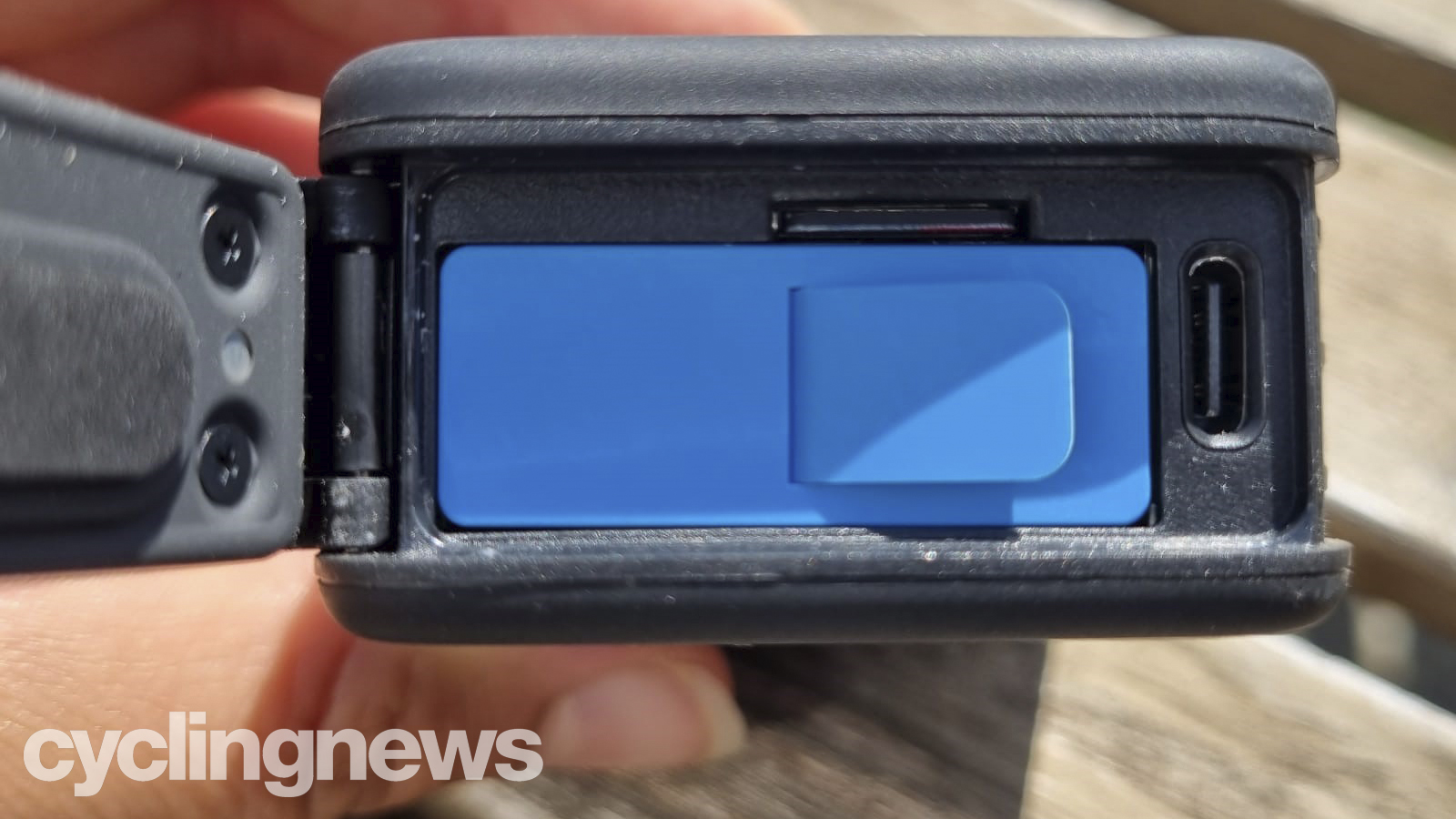
For those of you who want to get really fancy with your footage, the preset Slo-Mo mode enables you to capture activities at up to 240fps for a lovely, buttery-smooth slow-motion video. However, your computer needs some serious processing power to deal with it.
And this is one of the real barriers when it comes to the Hero 9. It’s an incredibly powerful action camera that puts out some seriously high quality footage, but if your computer’s not up to the task, there’s not a lot you can do with it. Of course, you can reduce the resolution to 1080p and 30fps and still get decent quality footage, but this defeats the object of using the Hero 9 in the first place, and is a surefire sign that it isn’t designed for the average commuter cyclist.
With such incredibly powerful functionality, not to mention extremely high-resolution files at the end of it, you need to have invested in some heavy duty hardware to get the most out of this camera, and this shouldn’t be a shock to anyone. As I’ve alluded to above, the Hero 9 is very clearly destined for the vlogger and filmmaker.
Mounting options
GoPro offers a veritable smorgasbord of mounting options, whether that’s simply clamping it directly to your handlebars, extending it higher with the flexible Gooseneck extender, or wearing it on a Chesty, and we’ve not even scratched the surface. However, I mention these three methods in particular, since they’re the methods I adopted throughout my testing period.
It should come as no surprise that the most stable option was directly mounting the Hero 9 to the handlebars via a Pole Mount. With very little in the way of flex, this resulted in some seriously smooth footage, even when riding off-road on mountain bike trails.
Wearing the Chesty came as a close second, though this can be a bit problematic if you’re overly blessed in the bust department. The resulting footage, taken on a rainy descent of Mam Tor in the Peak District, was still incredibly smooth, though I’ve found upon watching it back that my hoods often made an appearance at the bottom of the screen. The Chesty in fact is a very difficult mounting option to get right without someone to help you set it up, as you’re unable to properly see where the camera is pointing, at least until you dismount it to check your footage afterwards.
Finally the Gooseneck was something I tried out while attempting to chat to a friend on camera while cycling side by side. It certainly opens up your options while on the move, in terms of being able to spin the camera and point it in different directions, though due to its flexy design and long neck, it’s not surprising that it resulted in a lot of wobbling on the bike. Again, image stabilisation did a superb job of clearing that up for the most part, but it’s not flawless by any means.


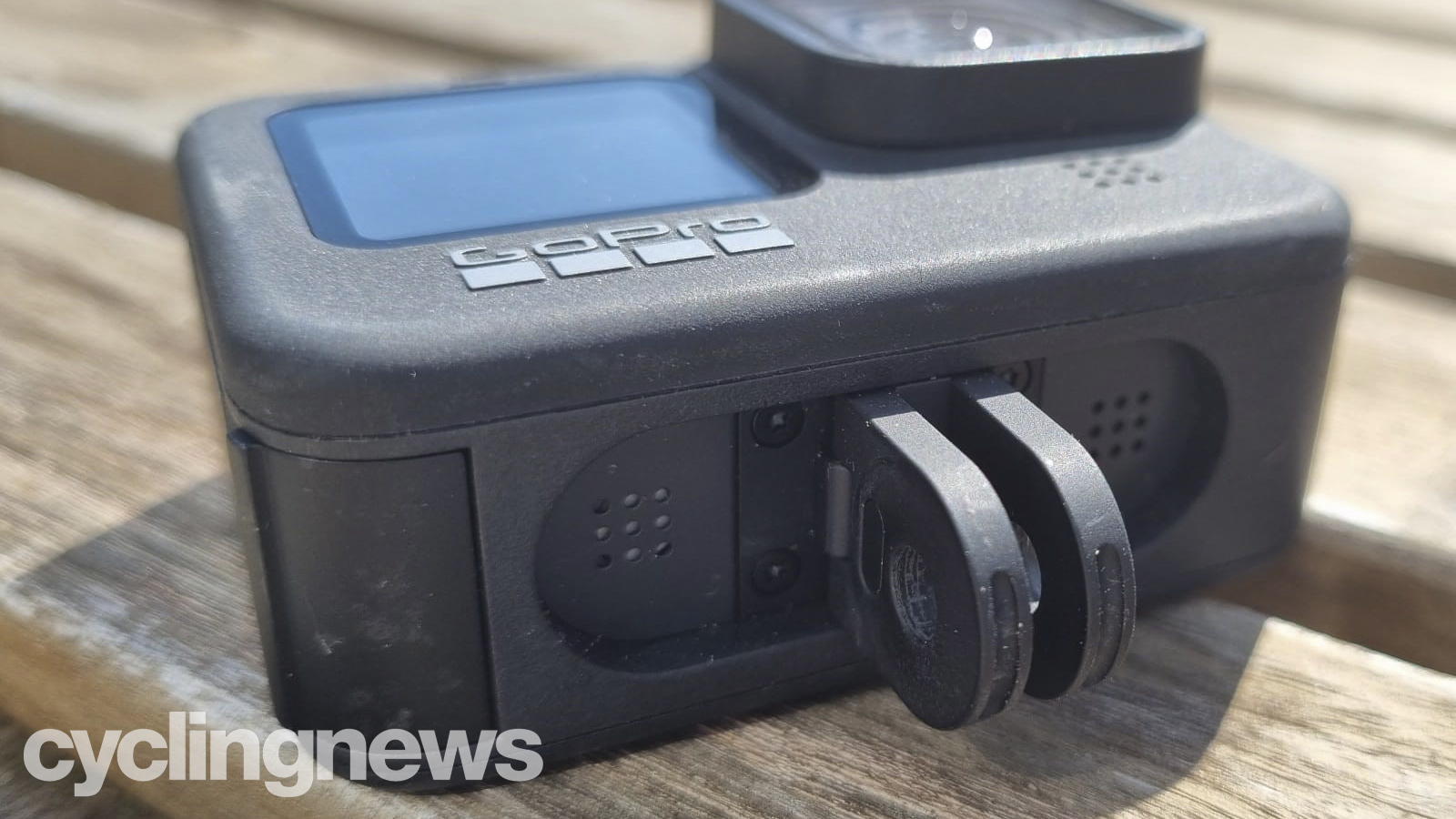
Connectivity
Once you’re done with filming, the next stage is doing something with your footage, and unfortunately file transfer is a bit of a pain. If you don’t want to subscribe to GoPro’s cloud storage service, then you can remove the mini SD card and connect it directly to your laptop or computer (this may require certain additional hardware, like an SD card adapter), however, you’ll need a lot of memory just to transfer them over.
The alternative is subscribing to GoPro and setting up auto-upload through the app, where you’ll have unlimited storage — this is perfect if you’re creating a lot of content and need the storage space, however it does also come with some downsides (besides having to pay for it). I found that when trying to download footage from the camera through the app, the connection between my devices kept getting lost, resulting in multiple re-starting. This not only takes a very long time, but it drains the battery at both ends and even resulted in the GoPro starting to heat up.
Verdict
The GoPro Hero 9 Black is an incredibly powerful action camera with a wealth of premium features that all come together to deliver stunning results. HyperSmooth 3.0 image stabilisation is outstanding, especially when paired with Boost mode over rougher terrain, with the final footage remaining smooth and easy on the eyes.
Battery life is pretty great, and while the front screen won’t be useful to everyone, the large rear screen is clear and responsive. However, all these things come at a price, and in the case of the Hero 9, that price is bulk. At 71mm wide and weighing 160g, it is chunky and heavy, which won’t suit anyone gunning for aero gains or watching the grams.
Overall it’s ideal if you’re a serious adventurer, filmmaker or vlogger, but overkill if you’re just looking to record close passes on the road.
Tech Specs: GoPro Hero 9 Black
- Dimensions: 71mm x 55mm x 34mm
- Weight: 160g
- Video quality: 5k/30fps, 4k/60fps, 1080p/240fps, 720p/240fps
- Photo quality: 20mp
- Image stabilisation: Electronic
- Battery life: Up to 1 hour 40 minutes
- Waterproof: 10m
Mildred joined as Reviews Writer for Cyclingnews and BikePerfect in December 2020. She loves all forms of cycling from long-distance audax to daily errand-running by bike, and does almost everything on two wheels, including moving house, and started out her cycling career working in a bike shop. For the past five years she's volunteered at The Bristol Bike Project as a mechanic and session coordinator, and now sits on its board of directors.
Since then she's gone on to write for a multitude of cycling publications, including Bikeradar, Cycling Plus, Singletrack, Red Bull, Cycling UK and Total Women's Cycling. She's dedicated to providing more coverage of women's specific cycling tech, elevating under-represented voices in the sport, and making cycling more accessible overall.
Height: 156cm (5'2")
Weight: 75kg
Rides: Stayer Groadinger UG, Triban RC520 Women's Disc, Genesis Flyer, Marin Larkspur, Cotic BFe 26, Clandestine custom bike
